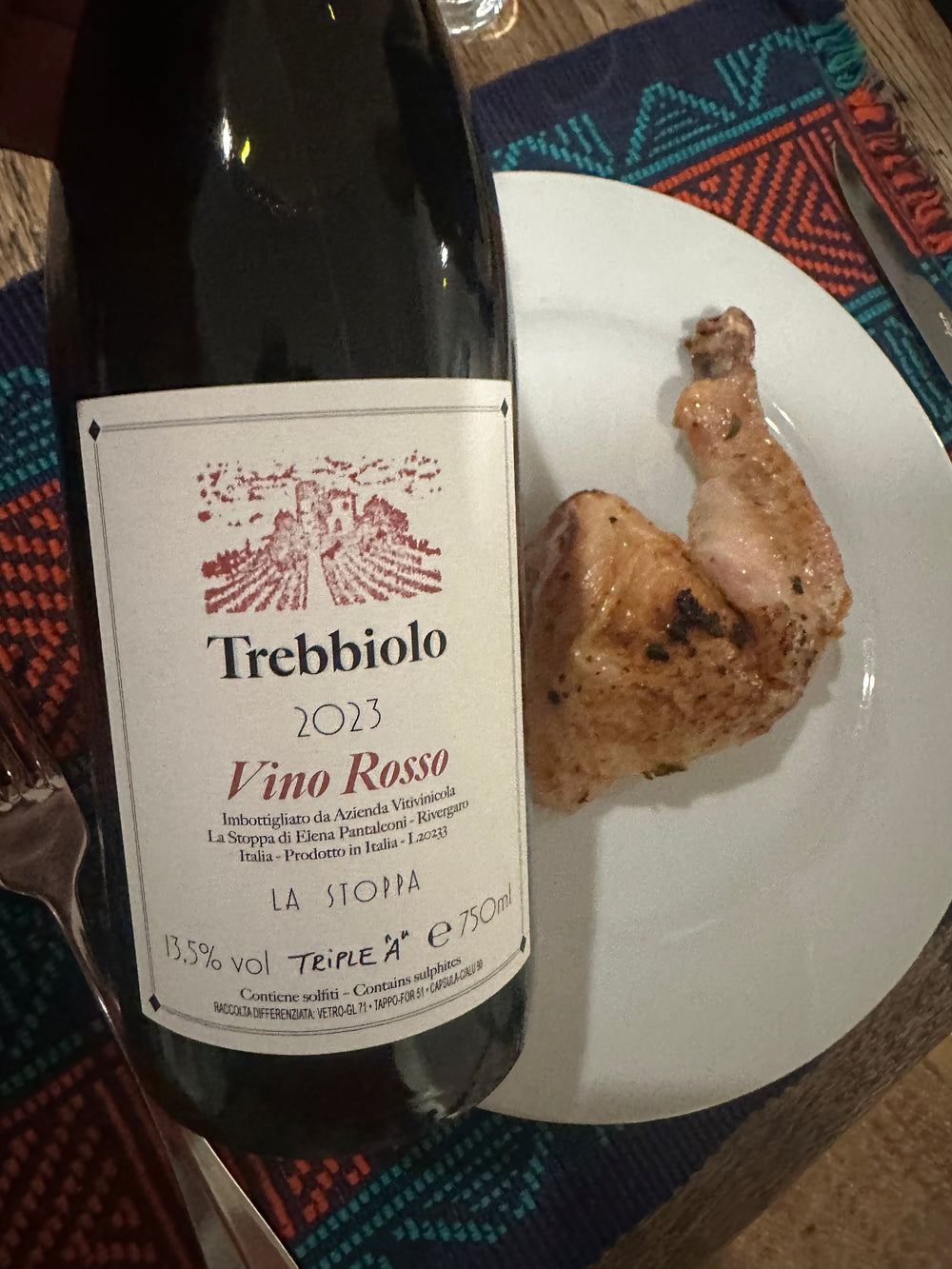
La Stoppa 'Trebbiolo' Rosso 2023
The Wine
'Trebbiolo' is a blend of 60% Barbera and 40% Bonarda (also known as Croatina, distinct from the Bonarda of Argentina). It’s crafted from the estate's youngest and most productive vines, aged between 5 and 20 years, grown on gentle slopes with heavy clay soils. The organically farmed fruit is hand-harvested, destemmed, and fermented with native yeasts in stainless steel, undergoing a 20-day skin maceration. The wine is then aged in stainless steel, with no sulfur used at any stage. The name "Trebbiolo" comes from the nearby Trebbia river and valley.
Natural nose that blows off with air - Bright purple in color, it offers aromas of sweet red cherries, earthy spices, and subtle vegetal notes. On the palate, it's dry yet vibrant, with refreshing acidity and a spicy finish - even shows a slightly sweet 'Ripasso' character and the wine is singing on day 2 if you can wait!
The Details
Variety - Barbera, Bonardo (Croatina)
Country - Italy
Region - Emilia-Romagna
Vintage - 2023
Extra - Cork
Volume - 750ml
About the Wine Maker 
The natural wines of La Stoppa are among the most sought-after in Italy. Led by the intelligent and passionate owner Elena Pantaleoni and the multi-talented winemaker Giulio Armani, this small family-owned estate is nestled in the Trebbiola Valley, near the Trebbia River in the province of Piacenza.
The estate follows organic viticulture, using only copper and sulfur treatments in the vineyard. The vines are guyot-trained and planted at a density of 6,000 vines per hectare, resulting in exceptionally low yields. The vineyard is home to local grape varieties like Malvasia di Candia, Ortuga, Trebbiano, Bonarda, and Barbera, alongside small plots of Cabernet Sauvignon and Merlot introduced over a century ago by the French. All grapes are hand-harvested, and the winemaking adheres strictly to natural wine principles—no added yeast, no fining, no filtration, and minimal sulfur used only at bottling for young wines and Malvasia frizzante, with none for the rest.


